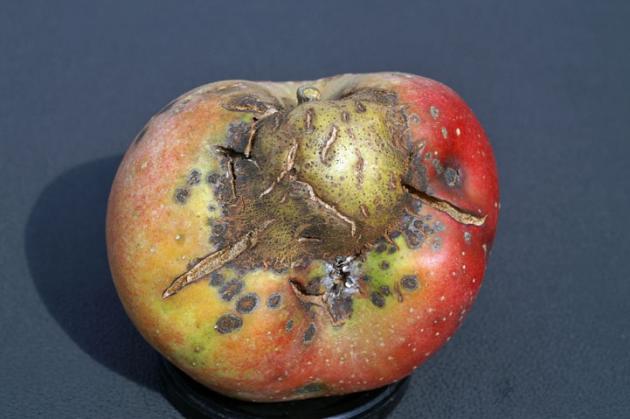Yes. Fungicide applications are an essential component of effective scab management, even though a cultivar may be resistant to the scab fungus. The fungicide applications contribute to the preservation of the plant’s resistance genes, which are subject to continuous evolutionary pressure from plant pathogens. For scab-resistant cultivars in particular, the most critical period for fungicide applications is during the primary infection cycle in the spring. Spores from over-wintered leaves on the ground are the “offspring” of the previous year’s infections …
Is there a chance that a scab-resistant apple cultivar will become scab-susceptible?
Yes, and several scab-resistant cultivars already are scab-susceptible at some locations. Most scab-resistant apples trace their origins to a collaboration between Purdue University, Rutgers University, and the University of Illinois. The PRI apple breeding program began in 1926 when crosses made from the crab apple, Malus floribunda 821, were found to show some resistance to apple scab. The PRI group then bred the resistant Vf gene from Malus floribunda 821 into commercial apple cultivars. Decades of subsequent hybridization and selection …
What scab-resistant apple cultivars are resistant or susceptible to other diseases?
All scab-resistant cultivars vary in their susceptibility to other early-season diseases; and all are susceptible to the summer diseases. See Table of Apple Scab Resistant Cultivar Susceptibility to Other Diseases for more information.…
Apple Scab

Apple scab is a fungus disease caused by Venturia inaequalis. It is of major economic importance and, if not controlled, can cause extensive losses (70% or greater) where humid, cool weather occurs during the spring months. Losses result directly from fruit or pedicel infections or indirectly from repeated defoliation, which can reduce tree growth and yield.
Symptoms
Apple scab lesions occur on leaves, petioles, blossoms, sepals, fruit, pedicels, and less frequently, on young shoots and bud scales. The first lesions …
